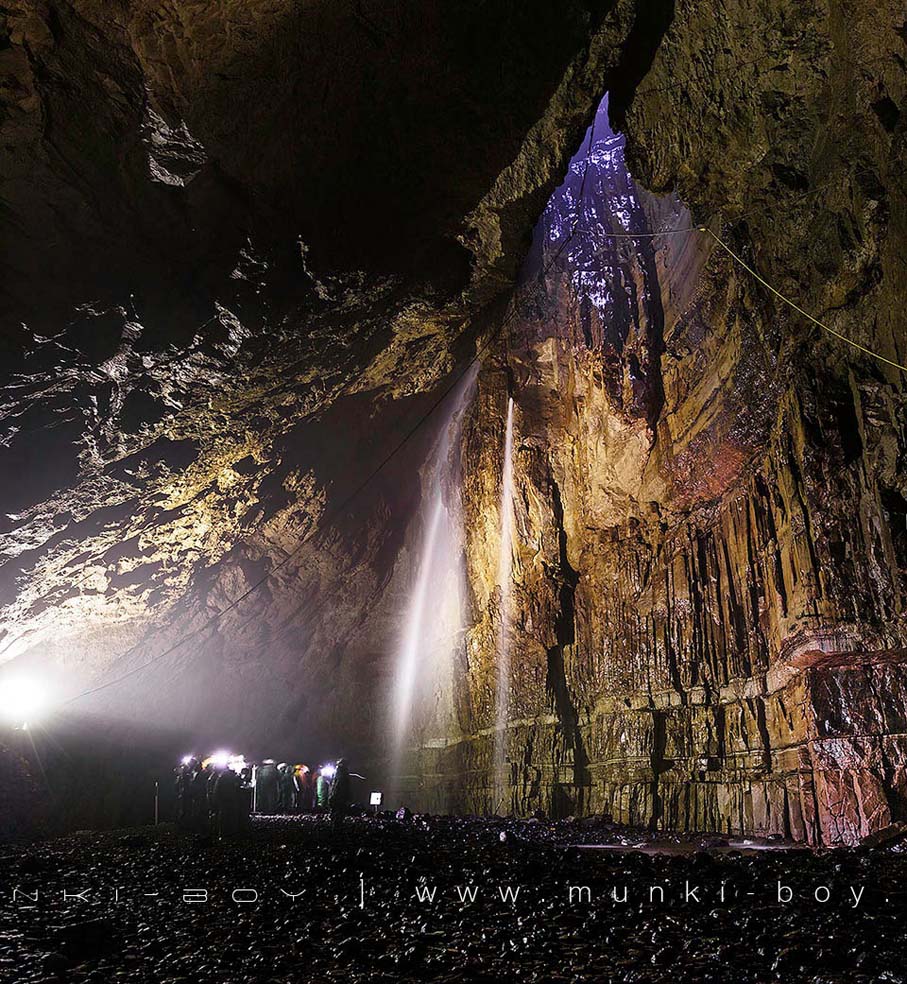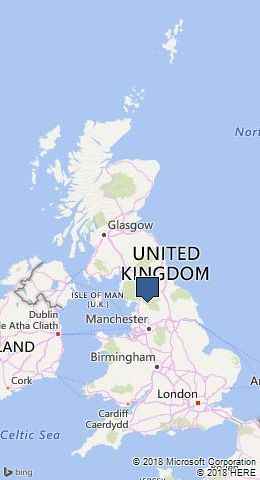
Gaping Gill by munki-boy
Gaping Gill
Gaping Gill is in The Yorkshire Dales National Park in England.
Gaping Gill, one of the most impressive natural wonders in the UK, is a vast cave system located on the slopes of Ingleborough in the Yorkshire Dales. This extraordinary site boasts the largest underground chamber naturally accessible in Britain, capable of comfortably accommodating St Paul’s Cathedral within its cavernous expanse. The main chamber is nearly 100 metres long and 30 metres high, creating a breath-taking subterranean spectacle for those fortunate enough to venture inside.
The most iconic feature of Gaping Gill is its dramatic waterfall, where the Fell Beck stream plunges 98 metres from the surface into the main chamber. This spectacular cascade is one of the highest unbroken waterfalls in England, contributing to the cave’s awe-inspiring atmosphere. The roar of the water and the sheer drop into the cavern below create a unique auditory and visual experience, leaving a lasting impression on visitors.
Access to Gaping Gill is typically restricted, making visits a special event. Twice a year, local caving clubs set up a winch system, allowing the public to be lowered into the cave’s depths. These winch meets, organised by the Bradford Pothole Club in May and the Craven Pothole Club in August, provide a rare opportunity to explore the interior of this natural marvel. The experience of being slowly lowered into the vast darkness, with the sound of the waterfall echoing around, is both thrilling and humbling.
Gaping Gill’s exploration history is rich and varied, with the first recorded descent made in 1842 by John Birkbeck, a pioneering Yorkshire caver. Since then, numerous expeditions have mapped the extensive network of passages and chambers that extend beyond the main chamber. These explorations have revealed an intricate and fascinating subterranean world, showcasing the geological processes that have shaped the landscape over millennia.
In addition to its geological significance, Gaping Gill is also of great biological interest. The cave environment supports a unique ecosystem, including species of invertebrates specially adapted to the dark, damp conditions. Studying these organisms provides valuable insights into the adaptability of life in extreme environments, highlighting the cave’s importance not just as a natural wonder, but as a site of scientific discovery.
Visiting Gaping Gill is an unforgettable experience, offering a glimpse into the hidden depths of the Yorkshire Dales. Whether you’re an avid caver or simply a lover of natural beauty, the grandeur and mystery of this remarkable cave system are sure to captivate your imagination. As you stand in the vast chamber, with the waterfall thundering down and the ancient rock walls surrounding you, it’s easy to understand why Gaping Gill remains one of the most celebrated natural sites in the UK.
Created: 27 November 2016 Edited: 29 October 2024
Gaping Gill
Gaping Gill LiDAR Map
Contains public sector information licensed under the Open Government Licence v3.0
Local History around Gaping Gill
There are some historic monuments around including:
Settlement 1/3 mile (540m) SE of Chapel le DaleSettlement in Ingman Lodge Shaw Pasture, HortonMarket Cross, ClaphamSettlement in Ashes Shaw Pasture, HortonEller Keld settlement siteSettlement on Gauber High Pasture RockRibblehead railway construction camp and prehistoric field systemApron Full of Stones cairnSettlement on Gauber Cow Pasture RocksLarge univallate hillfort on Ingleborough Hill.Round barrow on Sleights PastureSettlement in Top Cow Pasture, SelsideNative settlementYarlsber camp.








